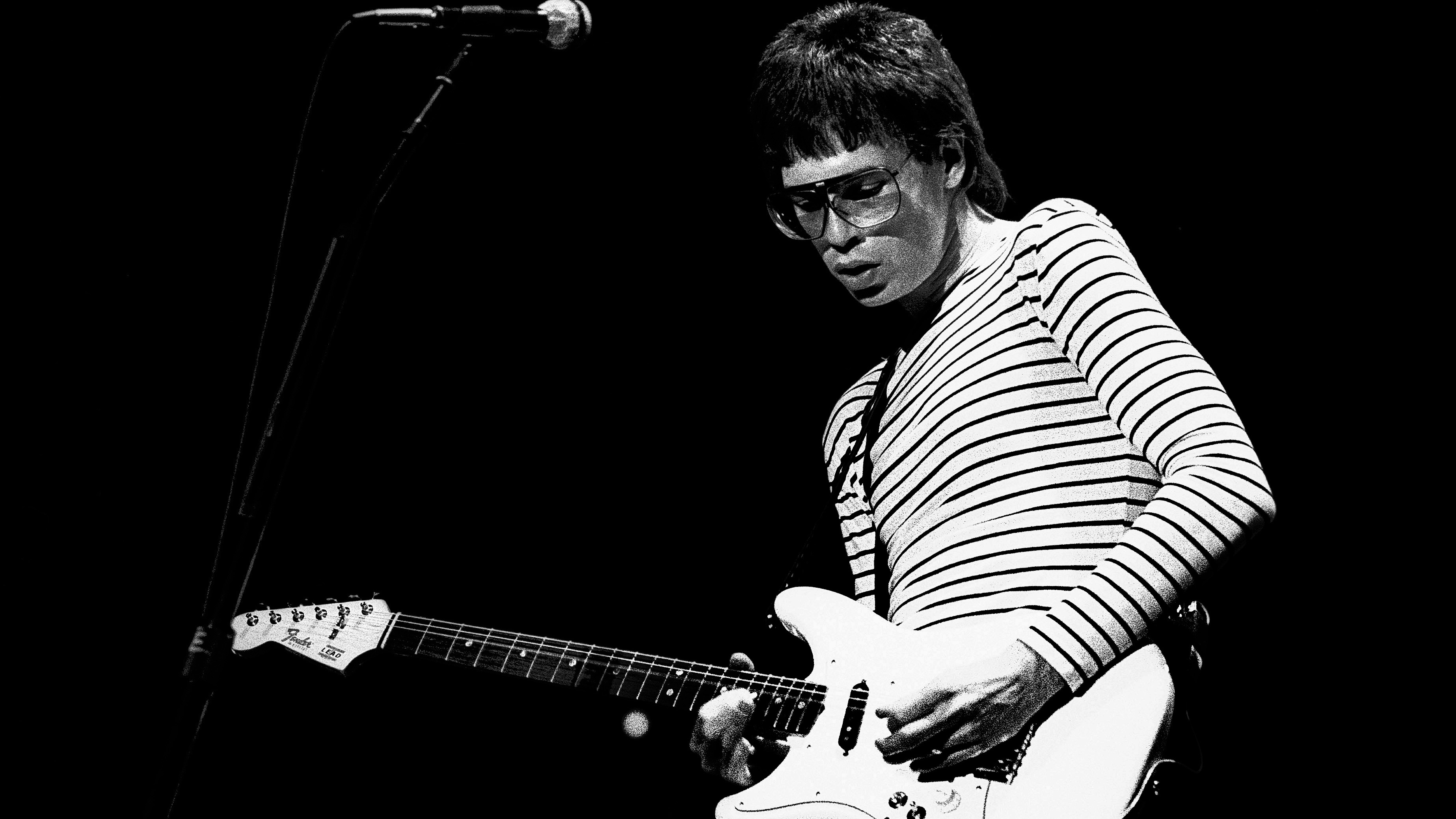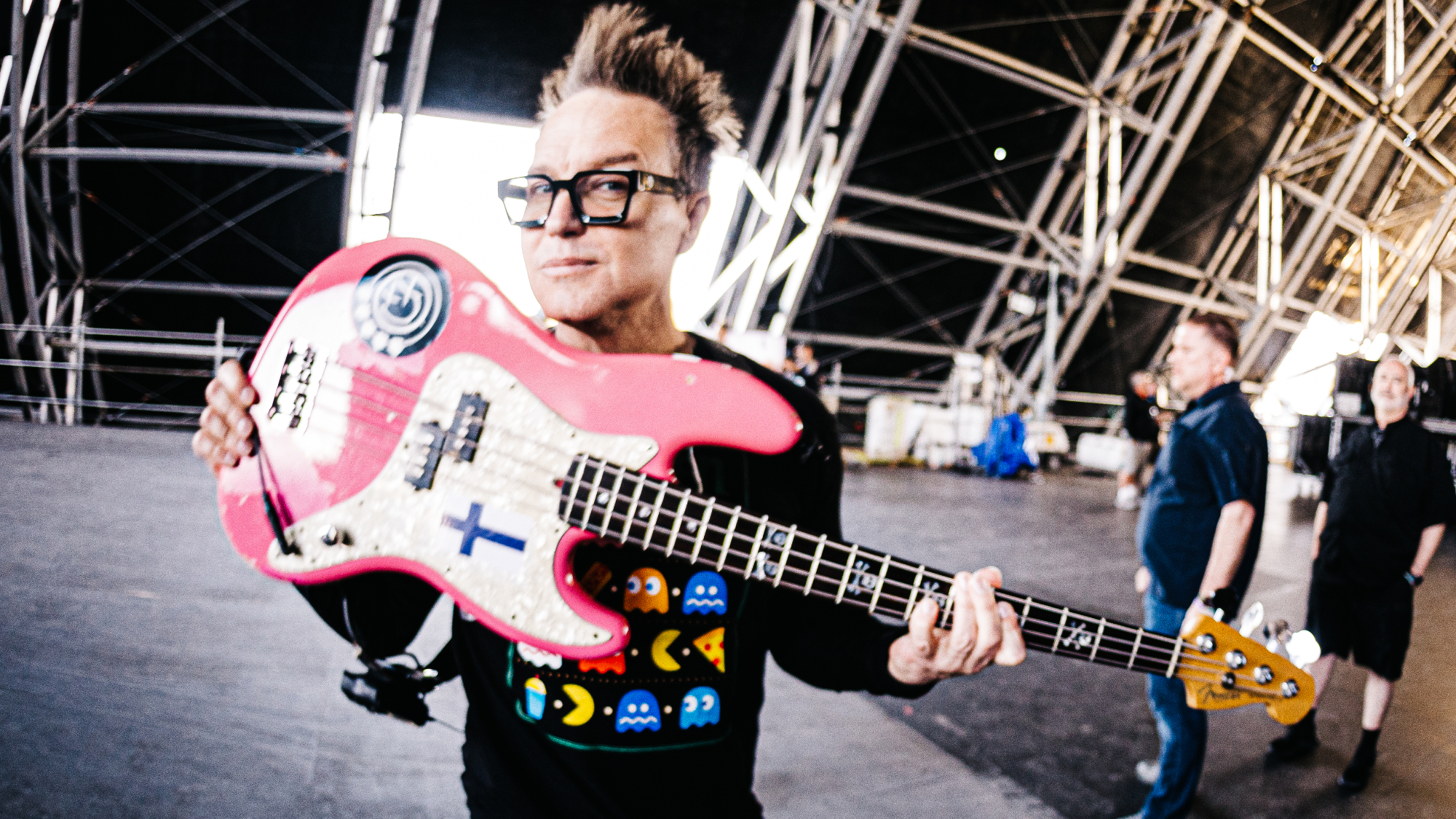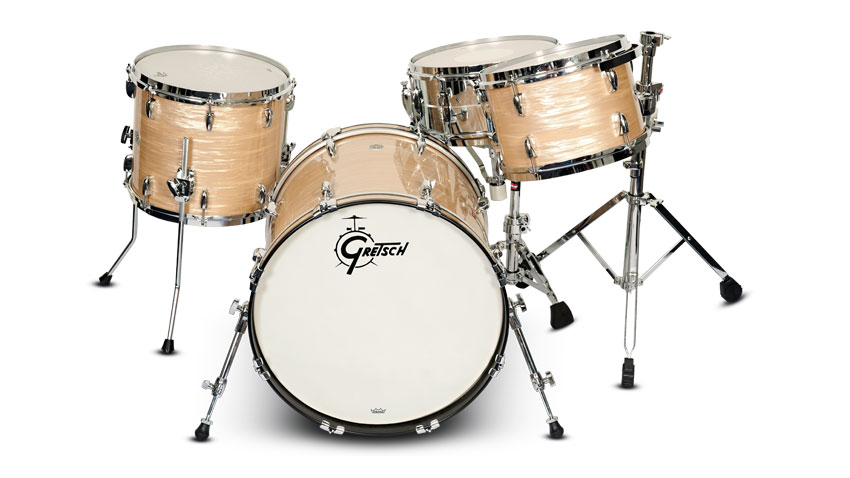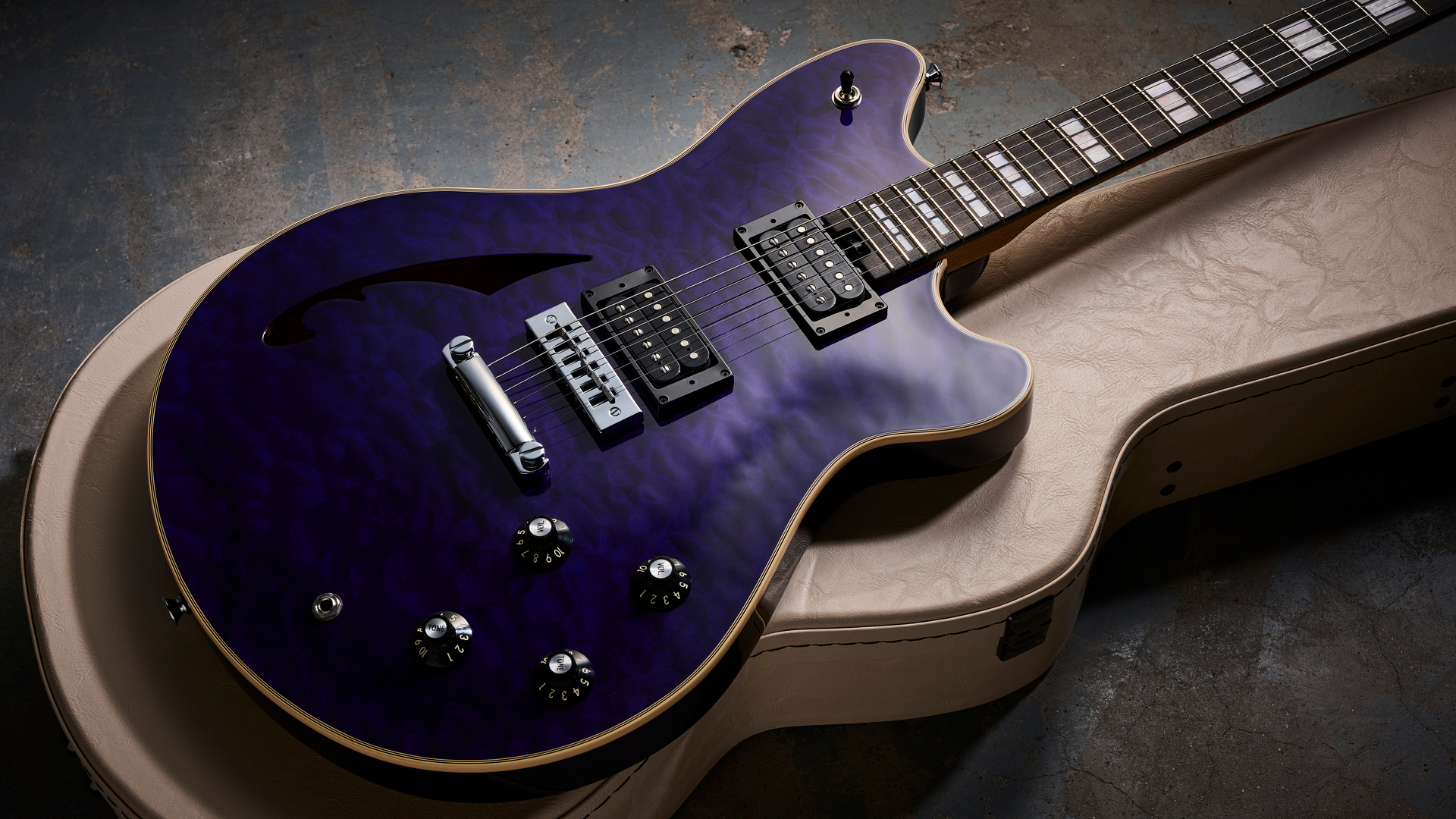MusicRadar Verdict
Built in the USA, Gretsch's new Brooklyn mixes the vintage and the new in a pleasing cocktail that offers a real alternative pro-line Gretsch at a more competitive price.
Pros
- +
Vintage sounds with modern design touches. The Brooklyn Round badge.
Cons
- -
Price.
MusicRadar's got your back

Gretsch Brooklyn Kit

Gretsch Brooklyn Kit (back)
More than any other drum company Gretsch plays on its heritage and its top line drum kits have changed less in build and appearance over the past half century than those of any other major manufacturer.
"Gretsch's round-badge drums from the 1950s and 1960s are prized in all forms of music and are still a staple of numerous studio sessions"
The adage, 'if it ain't broke don't fix it' could have been coined especially for Gretsch. The company's round-badge drums from the 1950s and 1960s are prized in all forms of music and are still a staple of numerous studio sessions. So this new Brooklyn kit is very much a recognisable classic Gretsch, with just a few small-but-important variations in the details as we shall shortly see.
The Brooklyn of the title refers to the fact that Gretsch had its base in Brooklyn, New York from its inception in 1883 right up until 1970 when the company up-rooted to Arkansas. The new Brooklyn kit revisits the round badge and double flanged hoops of some of the classic drums, which were produced in the Brooklyn factory. It is a professional level instrument but comes in at around 25 percent of the cost of Gretsch's flagship USA Custom line.
Build
The Brooklyn is, like the USA Customs, built at Gretsch's plant in Ridgeland, South Carolina. The shells are also made in America and are typical Gretsch six-ply maple-poplar with Gretsch-style 30 degree (rather than the more commonly found 45 degree) bearing edges.
There is a slight difference from the USA Custom shells in that they are a smidgen thicker, although the lay-up is the same as for the Customs. To be precise, tom shells are 0.22", while snares and bass drums are 0.31", whereas USA Custom shells are 0.20" and 0.30" respectively.
"Inside the shells are coated with Gretsch's Silver Sealer matt paint, which has been another Gretsch feature for decades"
Inside the shells are coated with Gretsch's Silver Sealer matt paint, which has been another Gretsch feature for decades. They also have paper badges with serial numbers. The review floor tom says 'Brooklyn Gretsch, GB-1214F, serial number 001211', which we're told means this was the 1,211th drum made.
Finish-wise you have eight alternatives - four natural-grained stained Satin woods: Mahogany, Dark Ebony, Tabasco and Emerald Green. And four wraps in what Gretsch has long called 'Nitron': Smoke Grey Oyster, Ruby Red Oyster, Royal Blue Oyster and the Vintage Cream Oyster of the review kit. Although called Vintage Cream it is not one of Gretsch's vintage finishes, but let's not quibble about that. It looks cool.
Four kit set-ups based on 18", 20", 22" or 24" bass drums can be chosen in any of these finishes. They are all three-shell sets and the review kit has a 20"x18" bass drum, 12"x8" mounted tom and 14"x12" floor tom on legs.
Keeping it simple like this is one reason Gretsch can offer the kits at a lower price. And there is a full range of single drums (8" to 18" toms) that can be bought separately if you want to expand. Gretsch is also producing a series of Brooklyn snare drums.
"Perhaps the standout new feature of the Brooklyn drums is the metal hoops"
Perhaps the standout new feature of the Brooklyn drums is the metal hoops. Since the 1960s Gretsch has been distinguished from its competitors by its high profile, thick set 'fully flanged' die-moulded zinc hoops. For the Brooklyn, Gretsch has reverted to a vintage style double-flanged pressed hoop. Since it is double-flanged (not triple-flanged like most modern hoops) the top edge is not turned over. It is what used to be called a 'stick chopper'.
However, the original stick choppers were made from thinner metal than the 3mm thick chrome plated steel of the new '302' series. The 302s also have the same characteristic high profile as Gretsch's die-cast hoops, which makes them taller than most triple-flanged hoops.
Next we have the reintroduction of the much loved round badge. The Brooklyn Round Badge is silver on black pewter embossed with the legend 'Gretsch, Drum Makers Since 1883'. The original round badge on toms had no air vent hole but, in keeping with modern practices, this one does.
What about updated features? Well, we particularly fell for the bass drum claws, which are a flatter, more modern design than the ancient curvaceous claws, still present on the USA Customs and which we've never been a big fan of. This sleek modern design looks more stable and effective with enclosed, drum key-tightened lug bolts.
Likewise, the floor tom leg brackets are now a solid affair with huge wing nuts and snug-slotting, contoured memory locks in keeping with the times. The legs themselves have a single outward bend and perfunctory rubber feet. There are no plastic or rubber gaskets underneath the lugs or claws, which is a little unusual these days.
Hands On
We were only able to try out the drums briefly in Fender's demo room but the initial impression was excellent. The toms are fitted with Gretsch Permatone (Remo Coated Ambassador) batter heads, while the bass drum batter is a Remo Pinstripe-3.
"Tuning up the floor tom took just a small turn on each rod"
For whatever reason, when we arrived, the 12"x8" tom was tuned low - lower than we would ever have it. What impressed us was that we could play it like that and the throaty sound, although almost rattling, was dark and moody yet clear. It held the tuning comfortably. And what also struck us was that to tune it up took just a small turn on each rod.
Also, there seemed less of a tendency to verge into bonksville bebop territory as the tension was increased. That's what this writer gets with his own 1981 USA Gretsch kit with its die-cast hoops. It's hard to be sure, but yes, we did feel these drums with their 302 hoops sounded a gnat's more open and blowsy, though no less deep and certainly warm.
The high profile of the hoops gives you that Gretsch vibe, but because they are thicker than vintage stick choppers we don't think you'll slice any more sticks than with normal hoops.
The 20"x18" kick, with Pinstripe-3 batter, full front logo head and no damping had noticeably more depth compared with my own 20"x14" - it actually sounded more like a 22". With just 16 lugs again it felt unrestricted - there was a full, rounded tone and a purposeful punch with plenty of ambience from the shell.
This applied also to the small tom (with the usual Gretsch 10 lugs, rather than the 12 of other companies), which felt more ambient with good sustain, again less constricted. By comparison the 14"x12" floor tom with its more crowded compliment of 16 lugs, felt just a fraction tighter although did give a decent bottom end.

“It was the most disgusting thing I could ever imagine. It makes me sick just thinking of it!” The Cars’ guitarist Elliot Easton recalls the worst thing that ever happened to him on stage

“I really thought I was going to die... and it absolutely was so freeing”: Blink 182’s Mark Hoppus talks surviving cancer and his band’s resurrection

“From the very start of his social media rise Giacomo has been using other people’s compositions”: Social media guitar influencer Giacomo Turra accused of using other musicians’ arrangements and passing them off as his own










